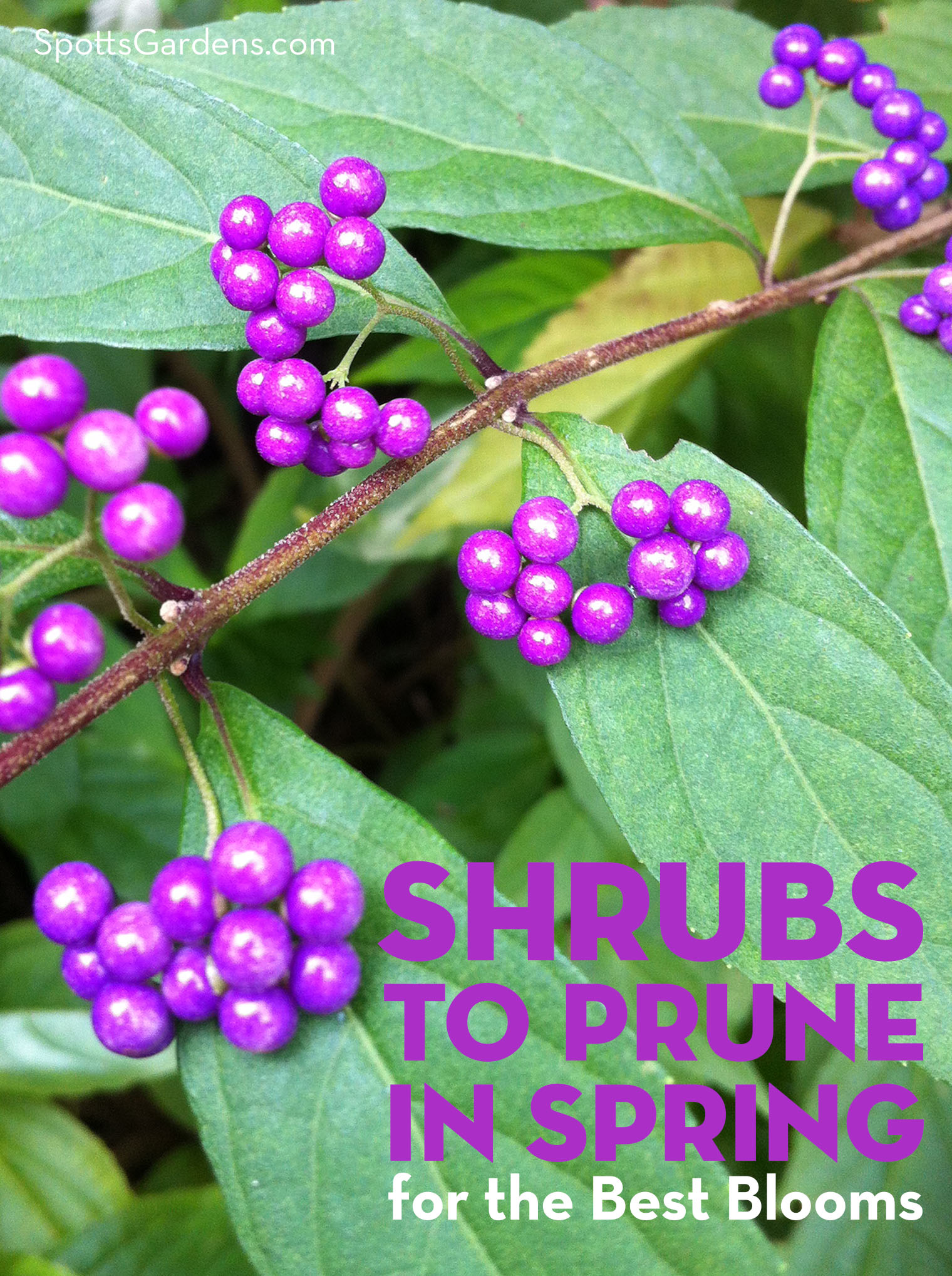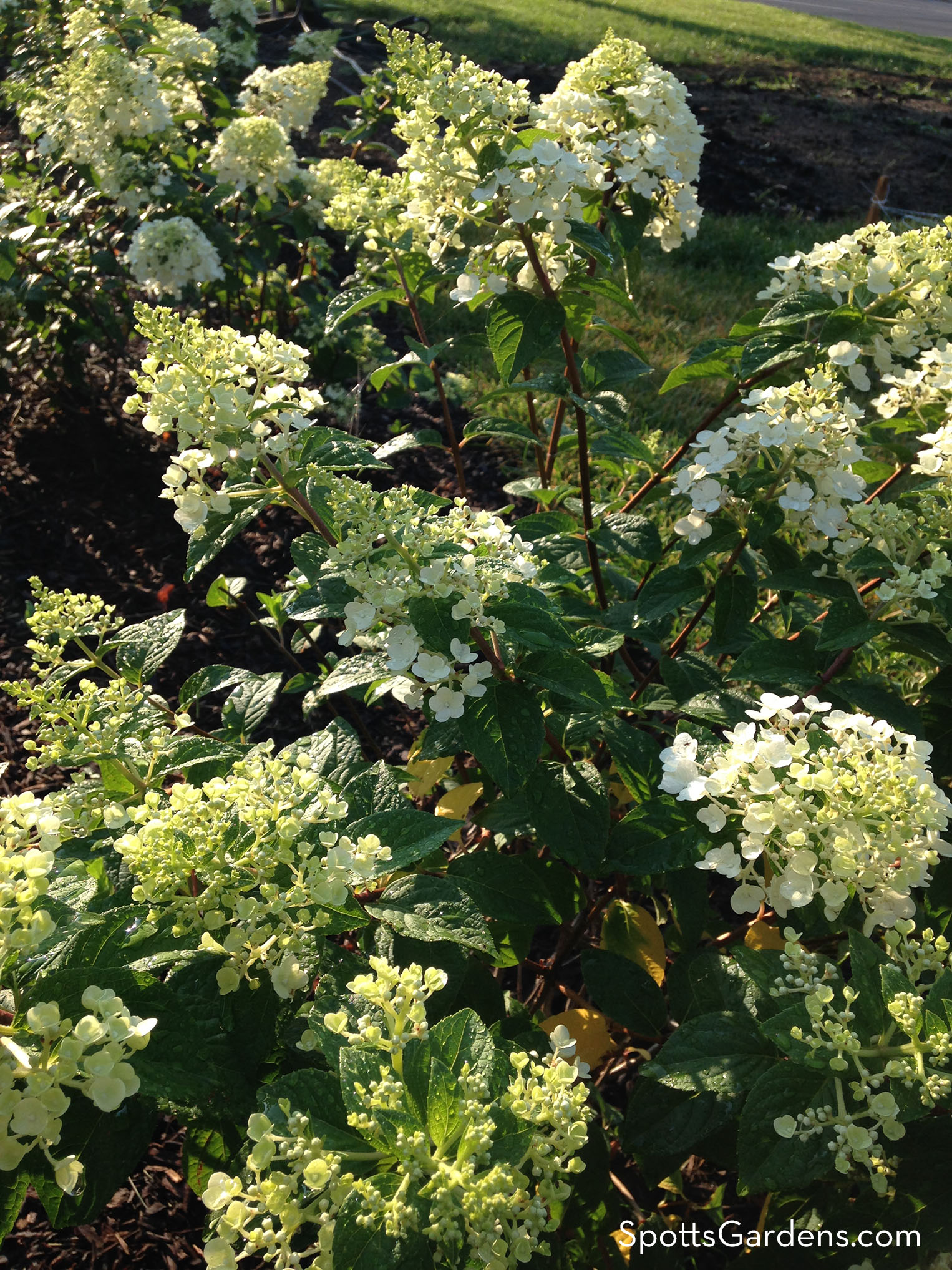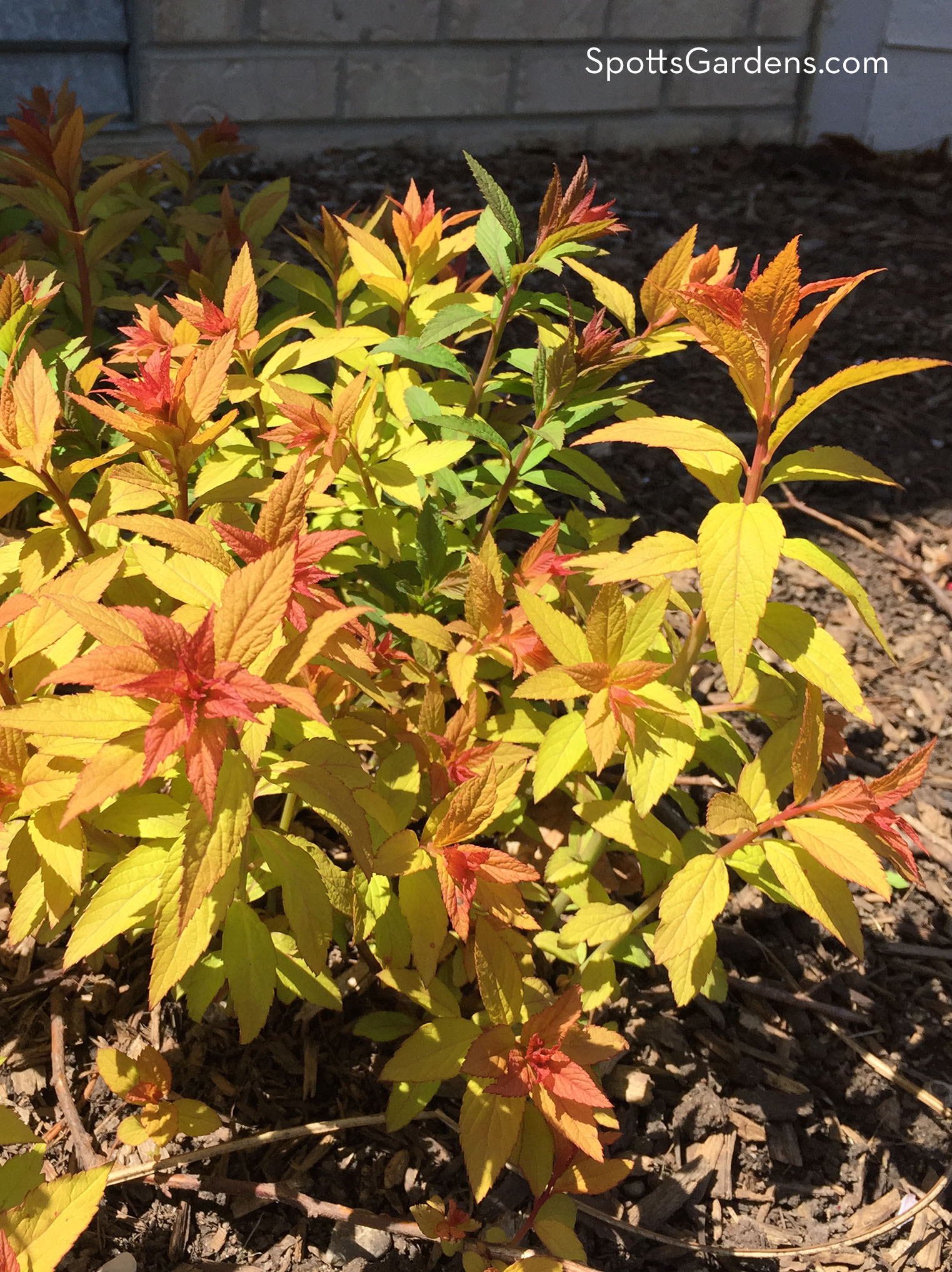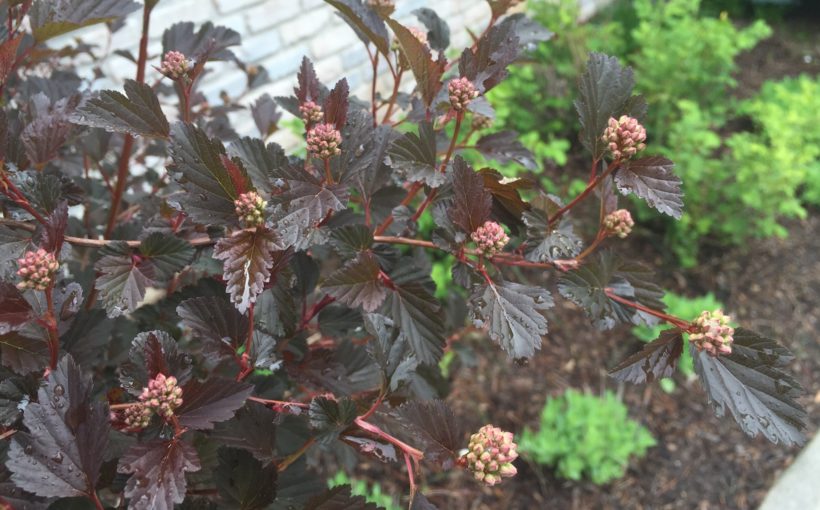As the weather warms and buds swell on the shrubs, it’s the right time to prune! Here in central Indiana, early spring (mid-March to mid-April) is the best time for pruning shrubs that bloom in summer. But don’t take your pruners to spring-blooming shrubs, like lilac, forsythia, and viburnum. Wait until they’re done with their spring flower show!
If you’d rather have us do the pruning for you, contact us today for a free estimate!

You don’t have to prune!
If you have a healthy shrub that’s the right size for its location, you may not need to prune. We only prune in spring if we want to:
- Stimulate new growth for shrubs that have the best color or bloom on new wood.
- Stimulate new growth to correct previous bad pruning.
- Stimulate new growth to rejuvenate old shrubs.
- Thin out heavily crowded shrubs.
Shrubs have lots of energy stored right now. The harder you prune in spring, the more the shrub will grow. So a cutting back by a lot can actually result in an even taller shrub.
If you want to reduce the size of your shrubs, prune lightly this time of year. Do most of your pruning in late June or July instead.
Selectively prune these summer bloomers.
According to Purdue University Cooperative Extension Service, you should prune these summer bloomers in early spring—but only if they need it. Some plants grown for their foliage also fall into this category.
These summer-blooming shrubs benefit from selective pruning: going into the shrub and pruning individual branches or stems. Check out this post for the how-to. A few of these plants can also be cut completely down if they are overgrown, a technique called coppicing (see the next section).
Most plants that bloom in summer bloom on new wood, which means the current season’s growth. So even if you cut away branches in March or April, you won’t reduce the amount of blooms that you get this year.
Don’t shear these plants. Shearing encourages bushy new growth at the tips and eventually prevents light from getting to the inside of the shrub. Shearing is for formal hedges of yew or boxwood, not deciduous shrubs. Use selective pruning instead.

Summer Bloomers and Foliage Shrubs to Prune in Spring (mid-March to April)
- Abelia x grandiflora (Glossy abelia)
- Berberis spp. (Barberry; may coppice for complete renewal)
- Cotoneaster spp. (Cotoneaster)
- Hibiscus syriacus (Rose of Sharon; may coppice for complete renewal)
- Hydrangea paniculata (Pannicle hydrangea)
- Hypericum spp. (St. John’s wort)
- Mahonia aquifolium (Oregon grape holly)
- Physocarpus opulifolius (Ninebark; may coppice for complete renewal)
- Rhus aromatica (Fragrant sumac)
- Sorbaria spp. (False spirea)
- Stewartia spp. (Stewartia)
- Symphoricarpos spp. (Snowberry or coralberry)
- Weigela spp. (Weigela; may coppice for complete renewal)
Coppice these quick-growing shrubs.
While all of the plants listed above may be selectively pruned, we find some do best when cut to the ground each spring. This technique is called “coppicing.” It takes advantage of the plants’ stored-up energy; a full cut-down encourages the plant to put out a burst of new stems.
To coppice, cut all the stems on these shrubs to within 6″ to 12″ from the ground. You can coppice a handful of very hardy shrubs from late winter to early spring. But if you’re planning to cut back other shrubs on this list or on the previous list, hold off until the weather warms in late March or early April.

Shrubs to Coppice in Late February or Early March
- Cornus sericea (red- and yellow-twig dogwood)has the best stem color on new stems. Some gardeners coppice them each spring. We prefer to cut down about 1/3 to 1/2 of the stems, so we get berries on the old wood and bright color on the new wood.
- Salix purpurea ‘Nana’ (Dwarf Arctic willow)
Summer-Blooming Shrubs to Coppice in Late March or April
- Buddleia davidii (Butterfly bush)
- Callicarpa spp. (Beautyberry)
- Caryopteris spp. (Blue-mist shrub)
- Hibiscus moscheutos (Swamp mallow)
- Hydrangea arborescens (Smooth-leaf hydrangea)
- Symphoricarpos albus (Snowberry)
- Spiraea japonica (Japanese spirea. Spirea japonica (shown above) is now on the “caution” list for invasive species. Cut it to the ground in spring both to rejuvenate it and to control its tendency to reseed.)
Leave spring bloomers alone!
Don’t prune these spring-blooming shrubs until after they bloom, or you’ll cut off the buds that become this year’s flowers. Wait until May or June, after they’ve finished their spring show. For a complete list, see this Purdue publication.
If you want to stimulate new growth on a spring bloomer, you can prune in March instead. But be aware you’ll lose some of this year’s flowers.
Spring-Blooming Shrubs to Prune in May or June
- Amelanchier spp. (Serviceberry)
- Berberis spp. (Barberry)
- Chaenomeles spp. (Flowering Quince)
- Deutzia spp. (Deutzia)
- Forsythia spp. (Forsythia)
- Philadelphus spp. (Mock Orange)
- Syringa spp. (Lilac)
- Viburnum spp. (Viburnums)
- Wisteria spp. (Wisteria)
Have pruners, will travel.
We’re happy to take care of pruning for you, in spring or any time of year! Contact us today for a free estimate.
If you want to prune your own plants but would like some guidance, our garden coach can teach you how to prune. Contact us to sign up for garden coaching.
